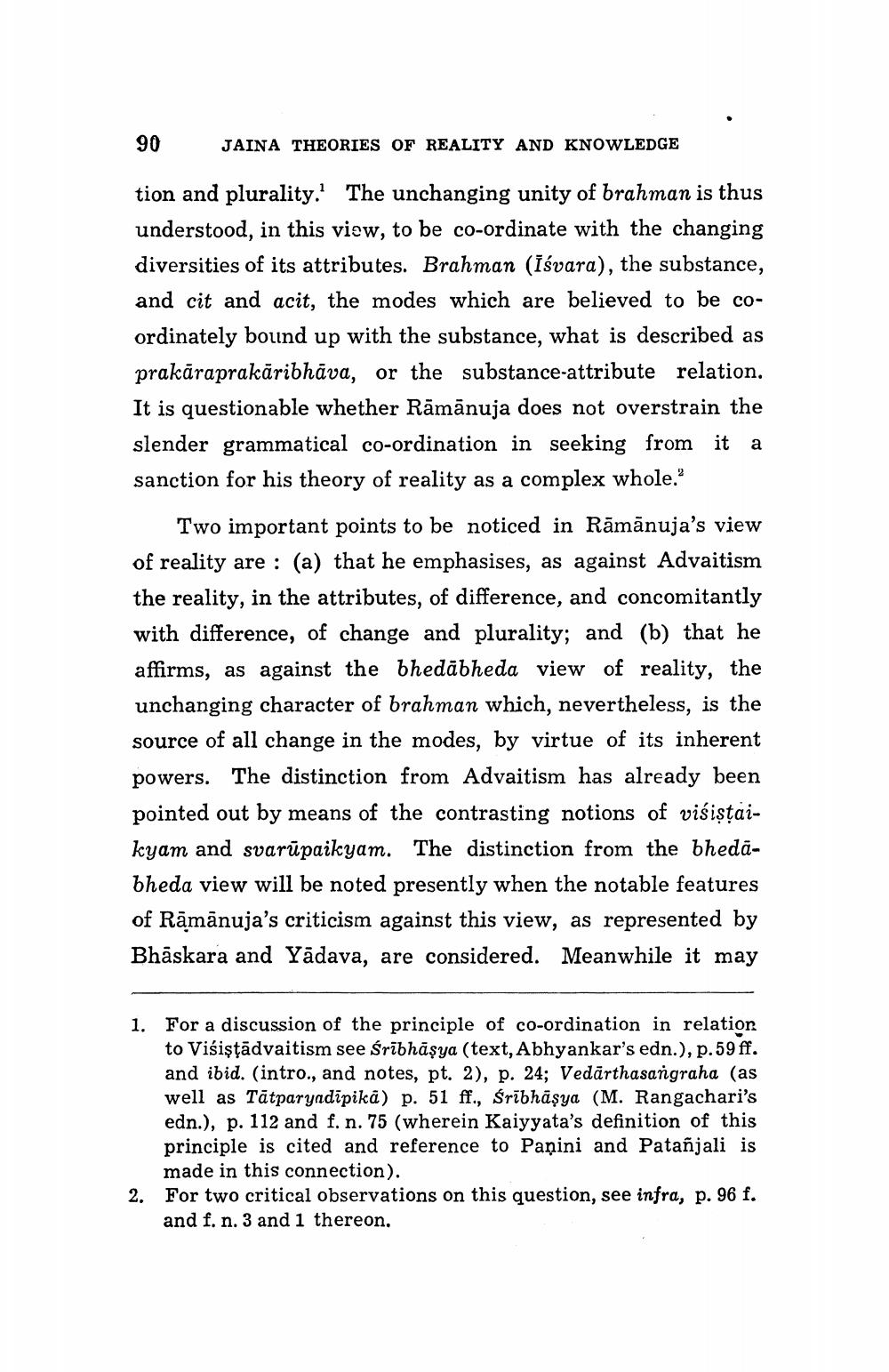________________
90
JAINA THEORIES OF REALITY AND KNOWLEDGE
tion and plurality. The unchanging unity of brahman is thus understood, in this view, to be co-ordinate with the changing diversities of its attributes. Brahman (īśvara), the substance, and cit and acit, the modes which are believed to be coordinately bound up with the substance, what is described as prakāraprakāribhāva, or the substance-attribute relation. It is questionable whether Rāmānuja does not overstrain the slender grammatical co-ordination in seeking from it a sanction for his theory of reality as a complex whole.?
Two important points to be noticed in Rāmānuja's view of reality are : (a) that he emphasises, as against Advaitism the reality, in the attributes, of difference, and concomitantly with difference, of change and plurality; and (b) that he affirms, as against the bhedābheda view of reality, the unchanging character of brahman which, nevertheless, is the source of all change in the modes, by virtue of its inherent powers. The distinction from Advaitism has already been pointed out by means of the contrasting notions of viếistaikyam and svarūpaikyam. The distinction from the bhedābheda view will be noted presently when the notable features of Rāmānuja's criticism against this view, as represented by Bhāskara and Yādava, are considered. Meanwhile it may
1. For a discussion of the principle of co-ordination in relation
to Visiştādvaitism see śrībhāşya (text, Abhyankar's edn.), p.59 ff. and ibid. (intro., and notes, pt. 2), p. 24; Vedārthasangraha (as well as Tātparyadīpika) p. 51 ff., Śrībhāşya (M. Rangachari's edn.), p. 112 and f. n. 75 (wherein Kaiyyata's definition of this principle is cited and reference to Panini and Patañjali is made in this connection). For two critical observations on this question, see infra, p. 96 f. and f. n. 3 and 1 thereon.




